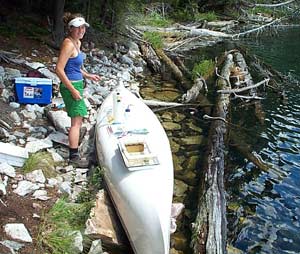
Introduction
Publications
Climate Change
Industrial Impacts
Agricultural Impacts
Urban Impacts
Biodiversity Loss
Definitions
Links
Site Map
|
 |
 Compensatory Species Dynamics and Grazing in Recovering Acidified Lakes:
Regulation of Biological Recovery Responses Compensatory Species Dynamics and Grazing in Recovering Acidified Lakes:
Regulation of Biological Recovery Responses
The focus of research on acidified lake ecosystems in Canada has shifted towards biological recovery as a result of improvements in water quality and reduced anthropogenic emissions of sulphur dioxide. Despite predictions that organisms would recolonise lakes following chemical improvements in water quality, there has been limited evidence of their return and recovery.
Biota such as algae, with high dispersal ability and reproductive capacity, are expected to be very responsive to chemical recovery. However, algae have shown inconsistent and delayed responses to improvements in water quality. Early studies suggested that abiotic factors regulated the algal recovery, but not the lag times between chemical changes and algal responses. Biotic factors such as grazing, or the consumption of algae, may regulate algal recovery rates and species-specific responses to chemical improvements in boreal lakes.
Clouds of filamentous algae such as those shown in the picture below, left, have begun to disappear from recovering, acidified lakes. Previous studies have concluded that an increase in grazing pressure explains the observed decline of algae. Due to a compensatory shift in consumer body size, grazing pressure may remain constant during recovery owing to a size-shift from small acid-tolerant to larger acid-sensitive species.
 |
 |
Filamentous green algae proliferate
in the littoral zone of an acidified lake |
Page 1 Page 2 Page 3
Back to Biodiversity Page
|  |
 | |
 |









